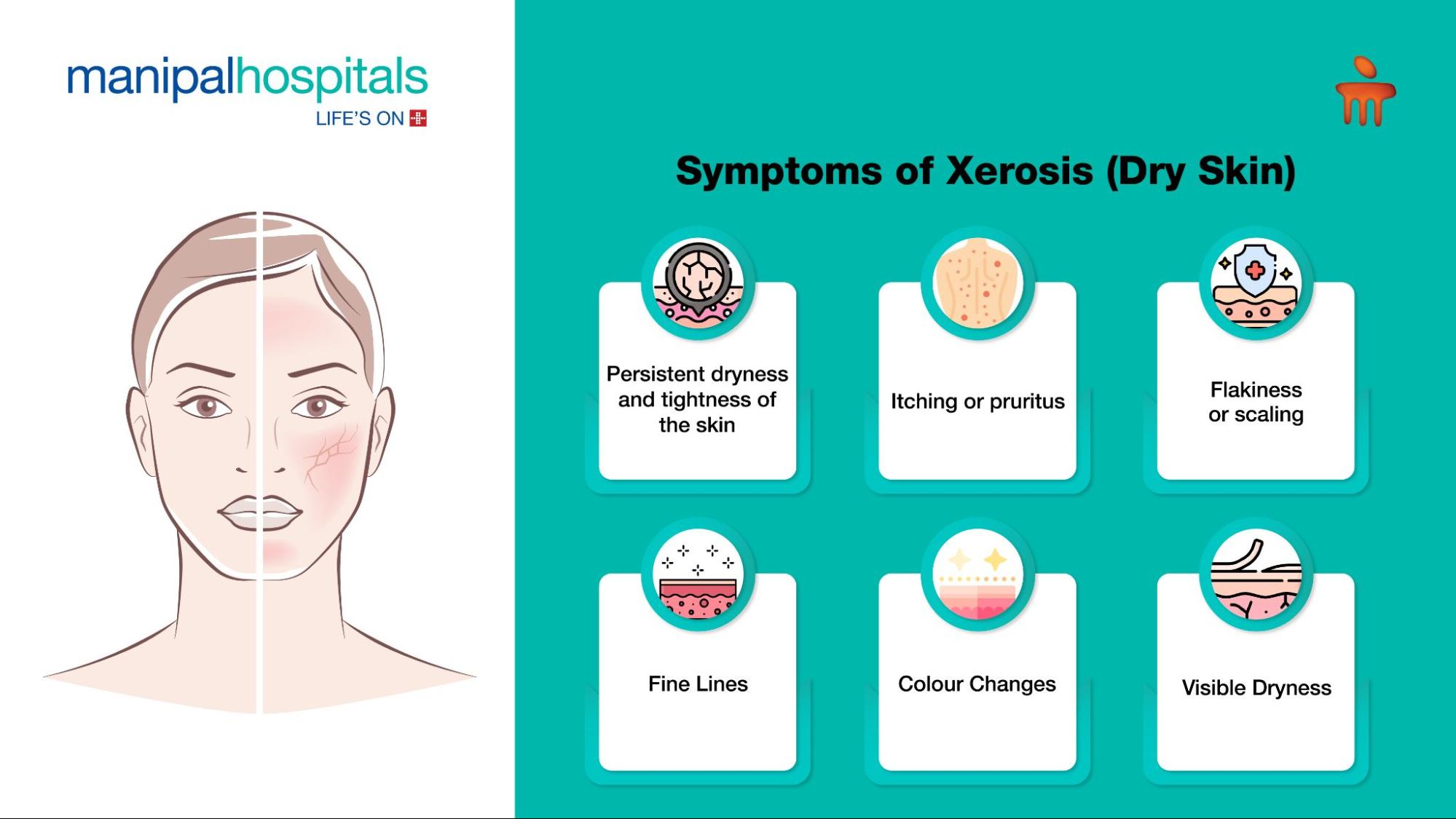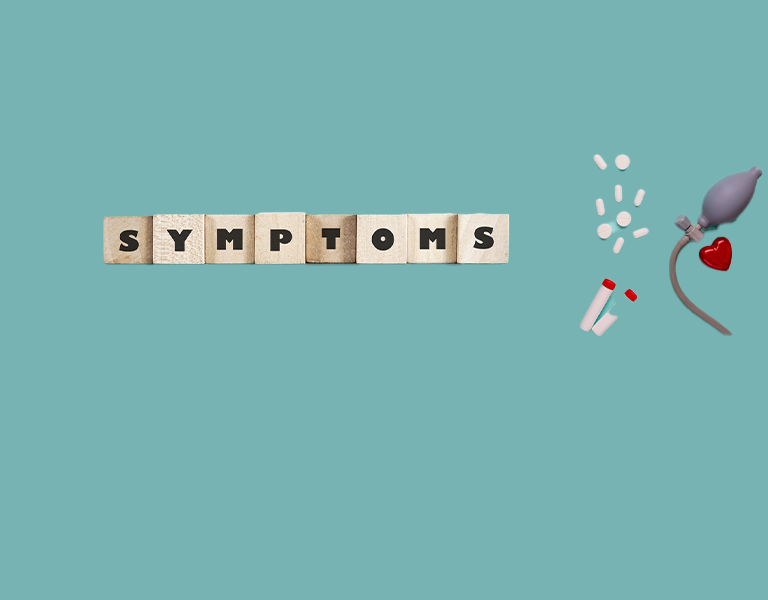Symptoms of Xerosis (Dry Skin)

Dry skin may present in various forms, such as:
In more severe cases of xerosis cutis, the following symptoms may be present:
-
Redness or inflammation
-
Deep Cracks
While dry skin can affect any area of the body, it’s most commonly found in the:
The Face is also a frequent target of dry skin, while the trunk is less affected.
Causes of Xerosis (Dry Skin)
A healthy skin barrier works like a shield, keeping the moisture and irritants out. When the skin’s natural process is disrupted, it loses its ability to produce and retain moisture effectively. This imbalance leads to excessive dryness.
Environmental Factors
Lifestyle Factors
Underlying Health Conditions
Risk Factors
A. Internal Factors
B. External Factors
-
Climate: Living in arid or cold regions.
-
Harsh Substances
-
Age: Elderly individuals are more prone to dry skin.
-
Occupation: Certain jobs with frequent handwashing or exposure to irritants.
While internal factors play a significant role, external factors also contribute to dry skin. Understanding these risk factors is crucial in developing effective strategies for managing and preventing dry skin. By addressing both internal and external influences, individuals can better protect their skin and maintain its health and hydration levels.
Common Misconceptions About Xerosis
-
Only Dry Skin Types Are Affected: Oily skin can also experience xerosis due to hormonal changes or harsh products.
-
All Moisturisers Work the Same: The wrong moisturiser can worsen dryness. Choose thicker creams for severe cases instead of lightweight lotions.
-
More Moisturiser Equals Better Results: Overapplying can clog pores. Focus on using the right amount that suits your skin type.
-
Xerosis is Just Cosmetic: It can cause significant discomfort, including itching and cracking, and may lead to infections if untreated.
- No Need to Moisturise in Humid Weather: Humidity doesn’t prevent dehydration. Maintain a regular moisturising routine regardless of the weather.
Prevention Strategies
To keep dry skin condition at bay, consider the following preventive measures:
-
Regular Skincare Routine: Establish a daily skincare routine that includes cleansing and moisturising. Consistency is key to maintaining skin hydration.
-
Avoiding Hot Showers: While they may feel soothing, hot showers can strip the skin of its natural oils. Opt for lukewarm water instead.
-
Choosing Gentle Laundry Detergents: Use mild, fragrance-free detergents to wash your clothes and bedding, as harsh chemicals can irritate sensitive skin.
-
Monitoring Environment: Be aware of seasonal changes and adjust your skincare routine accordingly. Cold, dry weather often necessitates heavier moisturisers, while humid conditions may allow for lighter formulations.
Dry Skin Treatment
Topical Moisturisers
Selecting the right moisturiser is crucial for managing dry skin effectively. Look for products that contain ingredients such as:
-
Hyaluronic Acid: A powerful humectant that attracts moisture to the skin.
-
Glycerin: Another humectant that helps draw water into the skin.
-
Ceramides: Lipids that restore the skin’s barrier and lock in moisture.
-
Shea Butter: A natural emollient that nourishes and hydrates dry skin.
Application Tips
-
To maintain skin hydration, apply moisturisers immediately after bathing while the skin is still damp to help seal in moisture.
-
Use a thicker cream or ointment at night for intensive dry skin relief.
-
For sensitive skin, opt for fragrance-free and hypoallergenic formulations to minimise irritation.
Prescription Medications
For individuals with severe dry skin or conditions such as eczema or psoriasis, dermatologists may prescribe stronger topical medications. These can include:
-
Corticosteroid Creams: Reduce inflammation and itchiness, providing quick relief for flare-ups.
-
Calcineurin Inhibitors: Non-steroidal medications that help manage inflammation without the side effects of steroids.
-
Coal Tar: Often used for psoriasis, it helps reduce scaling and itching.
Always follow your dermatologist's instructions regarding the use of these medications, as overuse can lead to skin thinning or other side effects.
Lifestyle Changes
Making certain lifestyle adjustments can significantly enhance skin health:
-
Bathing Habits: Limit baths or showers to 10-15 minutes and use warm, not hot, water. Choose mild, fragrance-free cleansers over harsh soaps, and gently pat your skin dry instead of rubbing it.
-
Avoiding Harsh Products: Steer clear of products containing alcohol, fragrances, or other irritants that can exacerbate dryness.
-
Sun Protection: Use a broad-spectrum sunscreen with SPF 30 or higher daily, as sun exposure can further dry out the skin.
When to See a Doctor
You should consider seeing a doctor for xerosis cutis in the following situations:
1. When home care and over-the-counter moisturisers are not effective: If you've been consistently using moisturisers and following good skin care practices, but your dry skin persists or worsens, it's crucial to consult a doctor.
2. The dryness is accompanied by additional symptoms: If your dry skin is accompanied by other concerning symptoms like:
-
Redness and irritation: This could indicate inflammation or infection.
-
Deep cracks in the skin: These can be painful and increase the risk of infection.
-
Bleeding is a sign of significant skin damage and requires medical attention.
3. You suspect an underlying medical condition: If you believe your dry skin might be linked to an underlying medical condition, such as diabetes, thyroid issues, or a skin disease, a doctor's evaluation is necessary to identify the cause and receive appropriate treatment.
FAQs
How long does xerosis last?
The duration of xerosis cutis varies depending on the severity, underlying causes, and individual factors. In mild cases with proper care using moisturisers and addressing contributing factors can improve within days or weeks. More severe cases or those linked with underlying medical conditions might require long-term management and professional guidance.
What does xerosis rash look like?
Xerosis doesn’t cause a rash, but it can lead to dry, flaky and sometimes cracked skin. It may appear greyish or whitish, ashy, often on arms, legs, hands and feet. If you experience itchy blisters or widespread redness, see a doctor without delay to rule out other conditions.
What is the best treatment for xerosis?
While the exact reason remains a mystery, several theories suggest why we yawn. Yawning might help us wake up by increasing alertness, cool down by dissipating heat from the head, stretch our facial muscles and lubricate the inner ear, and even be contagious, potentially playing a role in social bonding.
Is Xerosis the Same as Eczema?
While both xerosis and eczema involve skin dryness, they are not the same. Xerosis refers to extremely dry skin lacking sufficient moisture and natural oils. It commonly appears as flakiness, tightness, and itchiness. Eczema in broader terms encompasses various types of inflammatory skin conditions, often manifesting as dry itchy red and irritated patches.
Which specialist treats dry skin?
Dermatologists are medical doctors who specialize in diagnosing and treating all types of skin conditions, including dry skin, eczema, psoriasis, acne, and skin cancer. They have extensive training in skin health and can provide comprehensive treatment plans based on the severity and underlying cause of your dry skin.
What causes xerosis?
Xerosis, or dry skin, can be caused by various factors, including environmental conditions (like low humidity and cold weather), excessive bathing or showering, harsh soaps and detergents, certain medical conditions (such as eczema or psoriasis), ageing, and skincare products that contain alcohol or fragrances.
How can I prevent xerosis?
To prevent xerosis, consider the following strategies:
-
Use a gentle, hydrating cleanser.
-
Moisturise immediately after bathing while the skin is still damp.
-
Avoid hot showers and limit bath time.
-
Use a humidifier in dry indoor environments.
-
Choose fragrance-free and alcohol-free skincare products.
-
Stay hydrated by drinking plenty of water.
When should I see a doctor for dry skin?
You should consult a doctor if:
-
Your dry skin persists despite using over-the-counter treatments.
-
You experience severe itching, redness, or inflammation.
-
Cracking or bleeding occurs, which may indicate a risk of infection.
-
Dry skin affects your daily activities or quality of life.
Can xerosis lead to other skin conditions?
Yes, untreated xerosis can lead to other skin conditions. It may exacerbate issues like eczema or psoriasis and increase the risk of skin infections due to cracking or compromised skin barriers. If you notice persistent dryness or irritation, it's essential to seek medical advice.





























